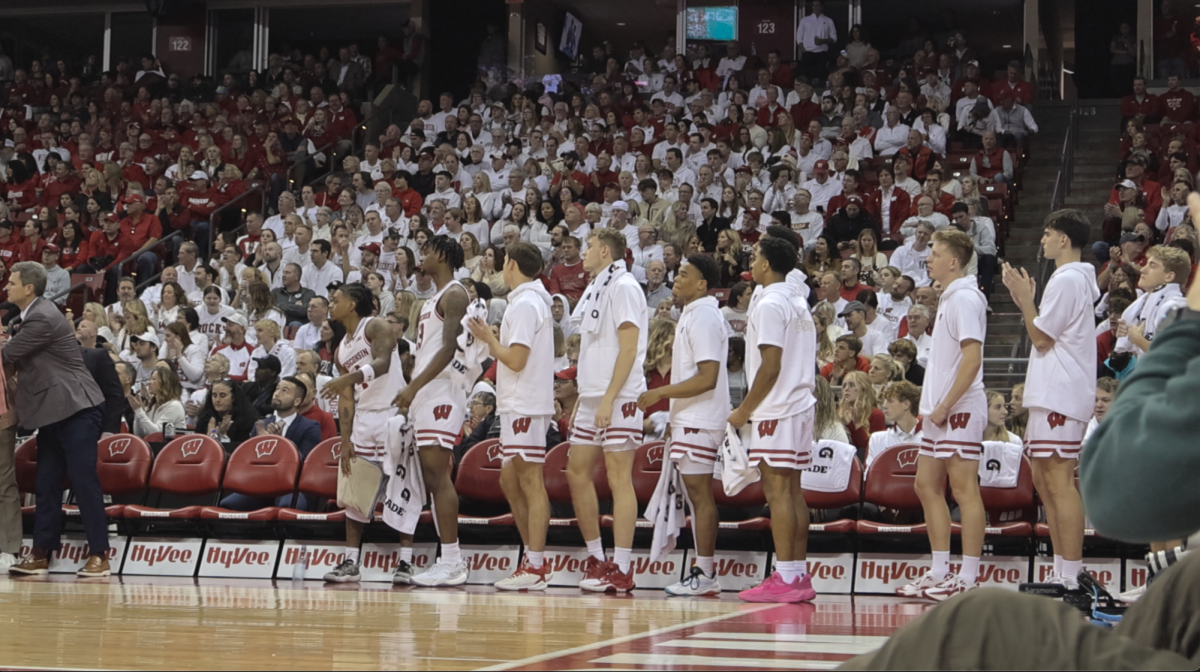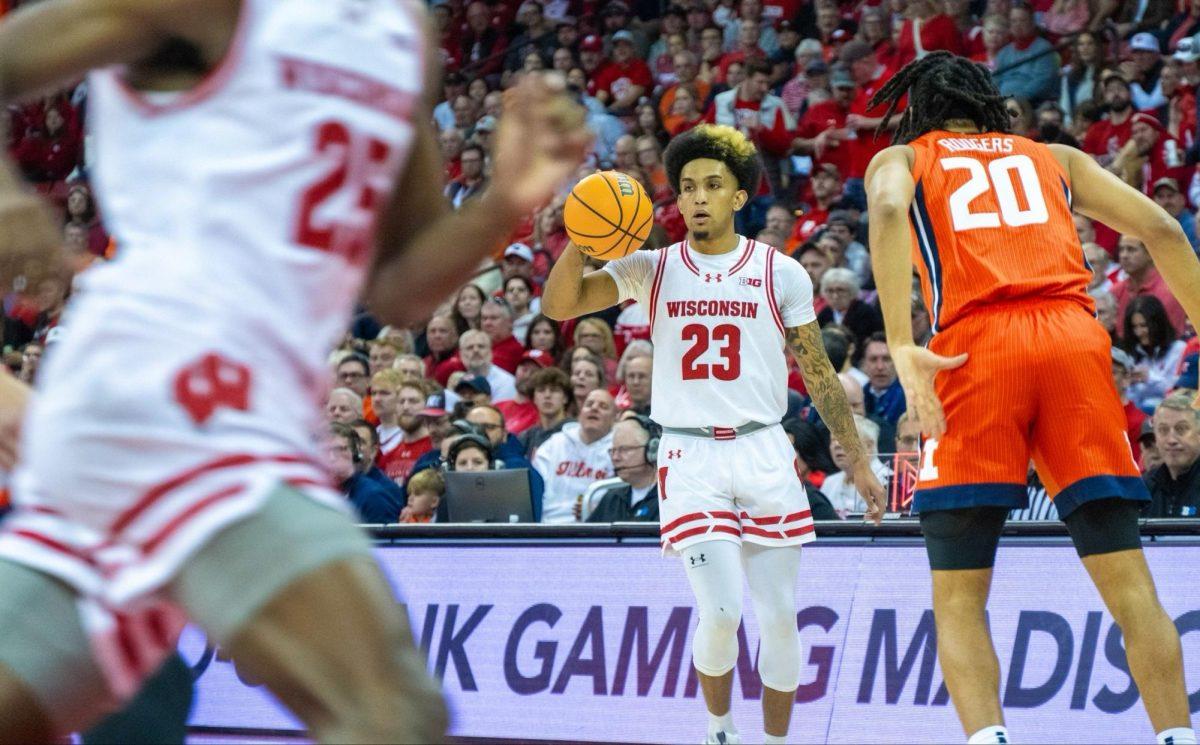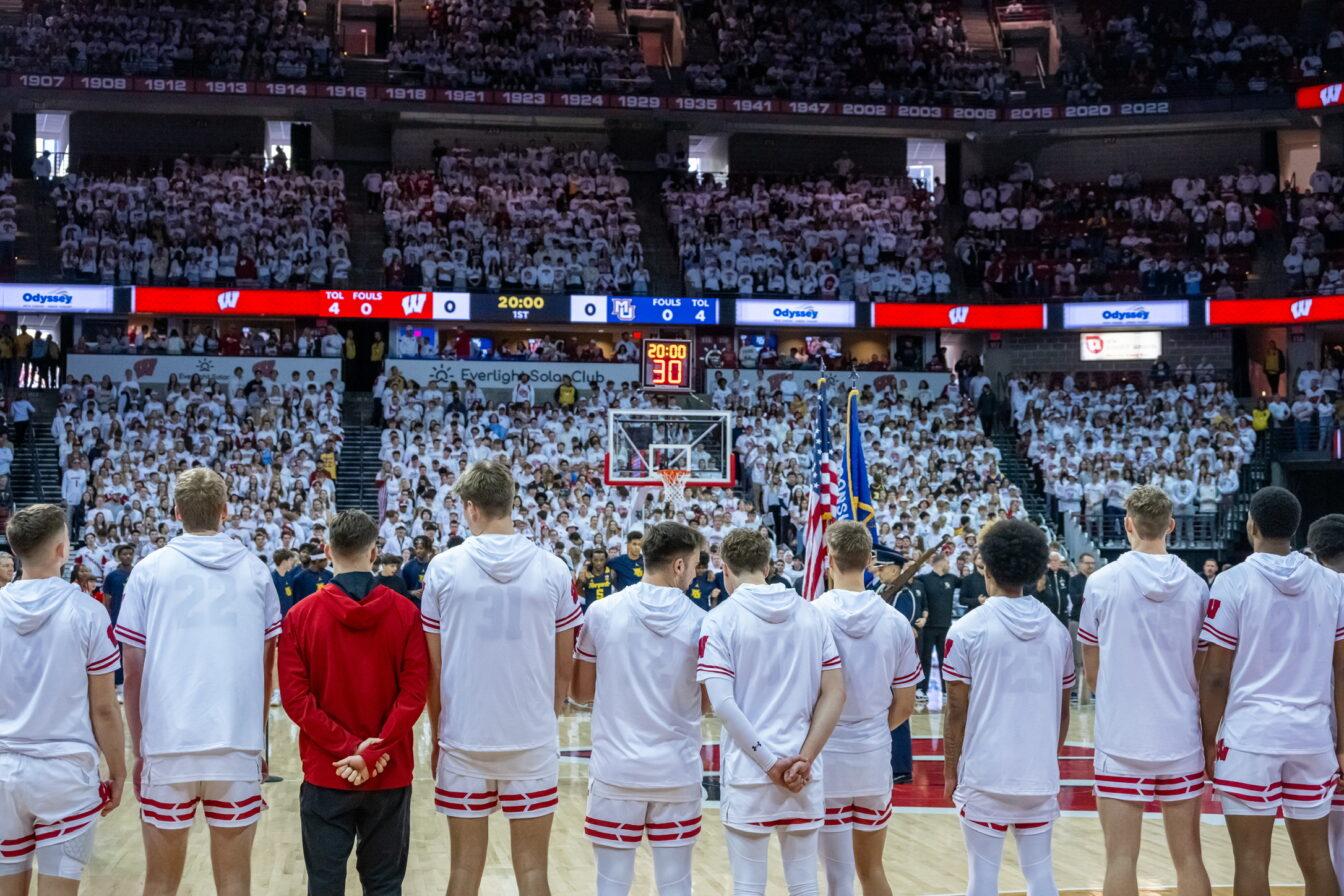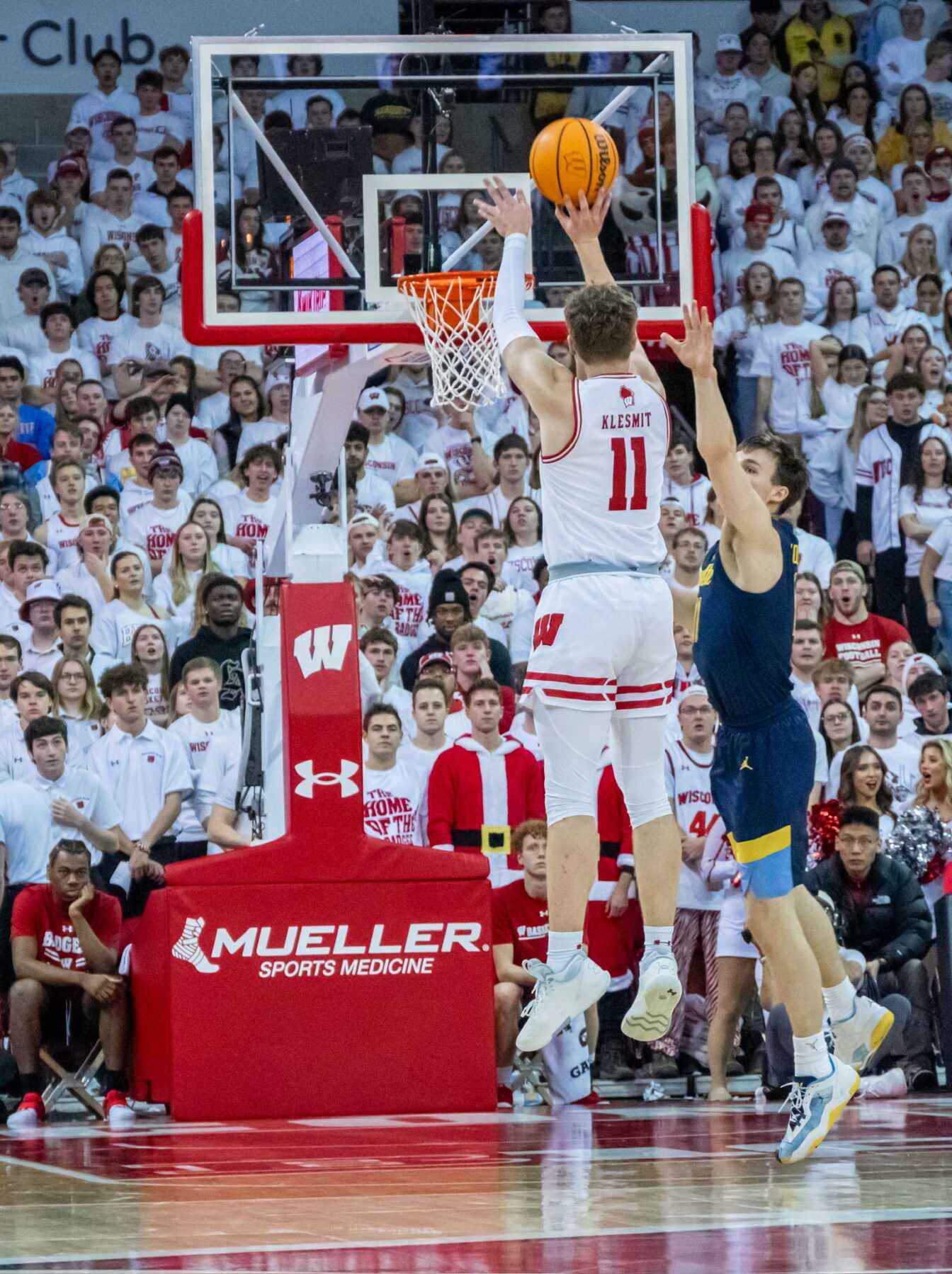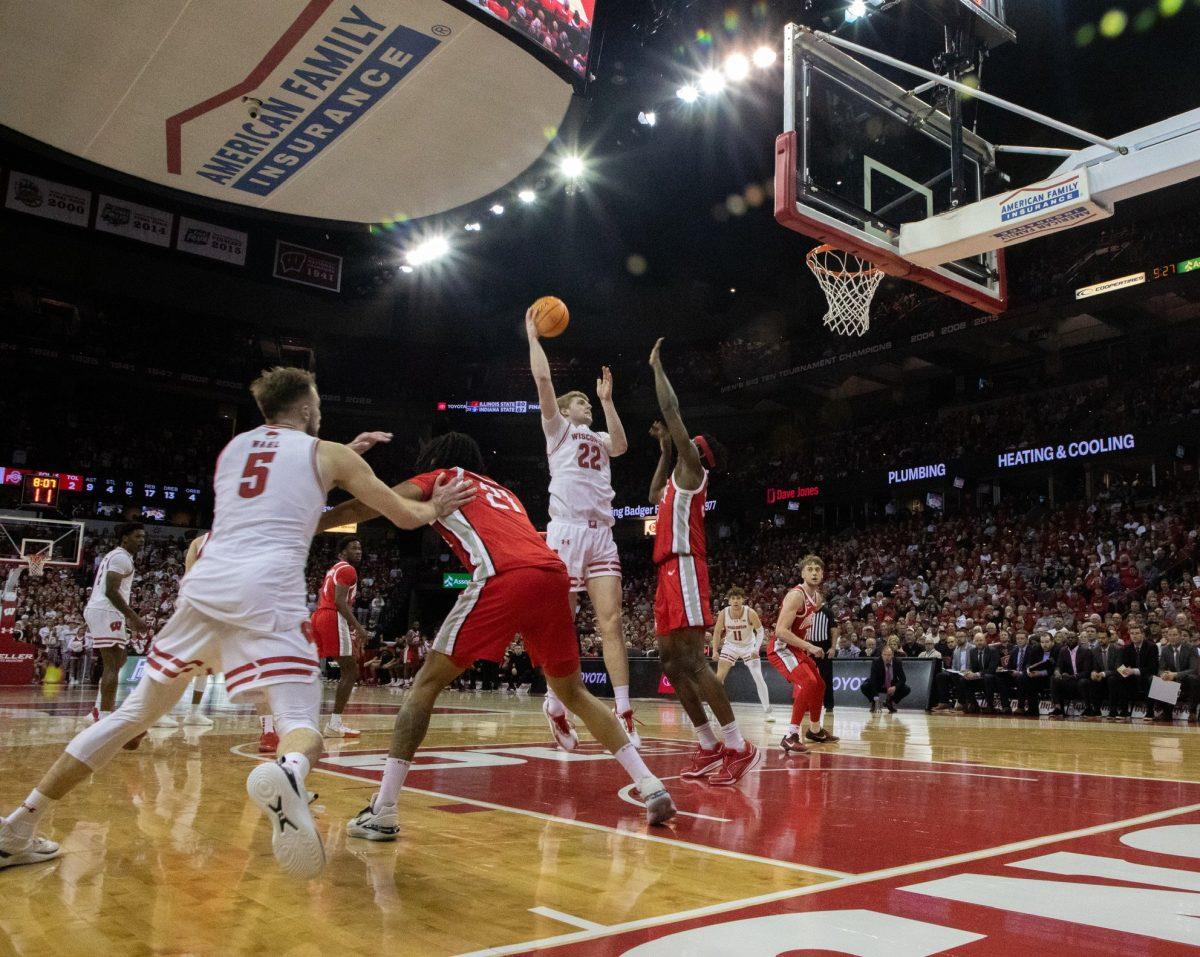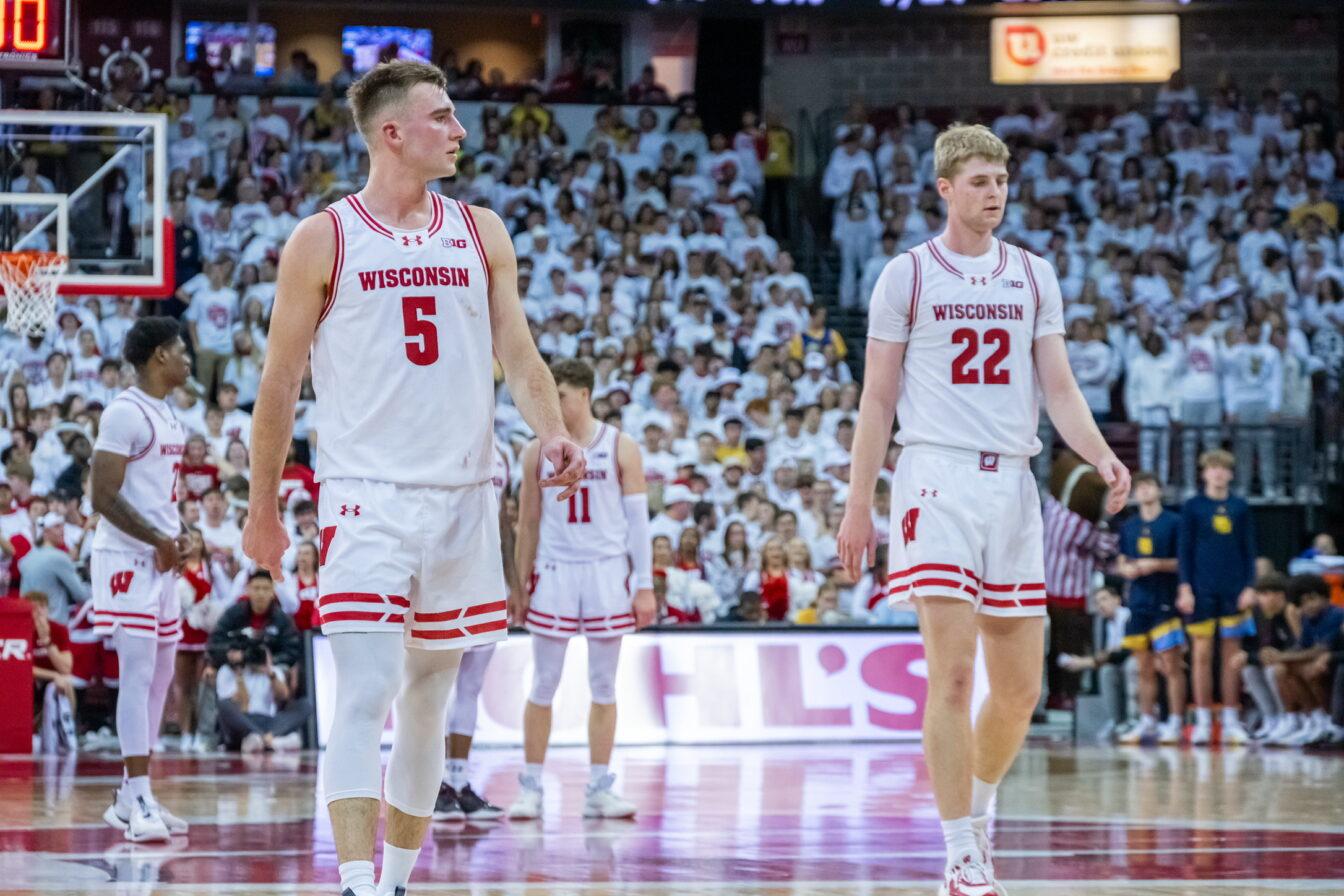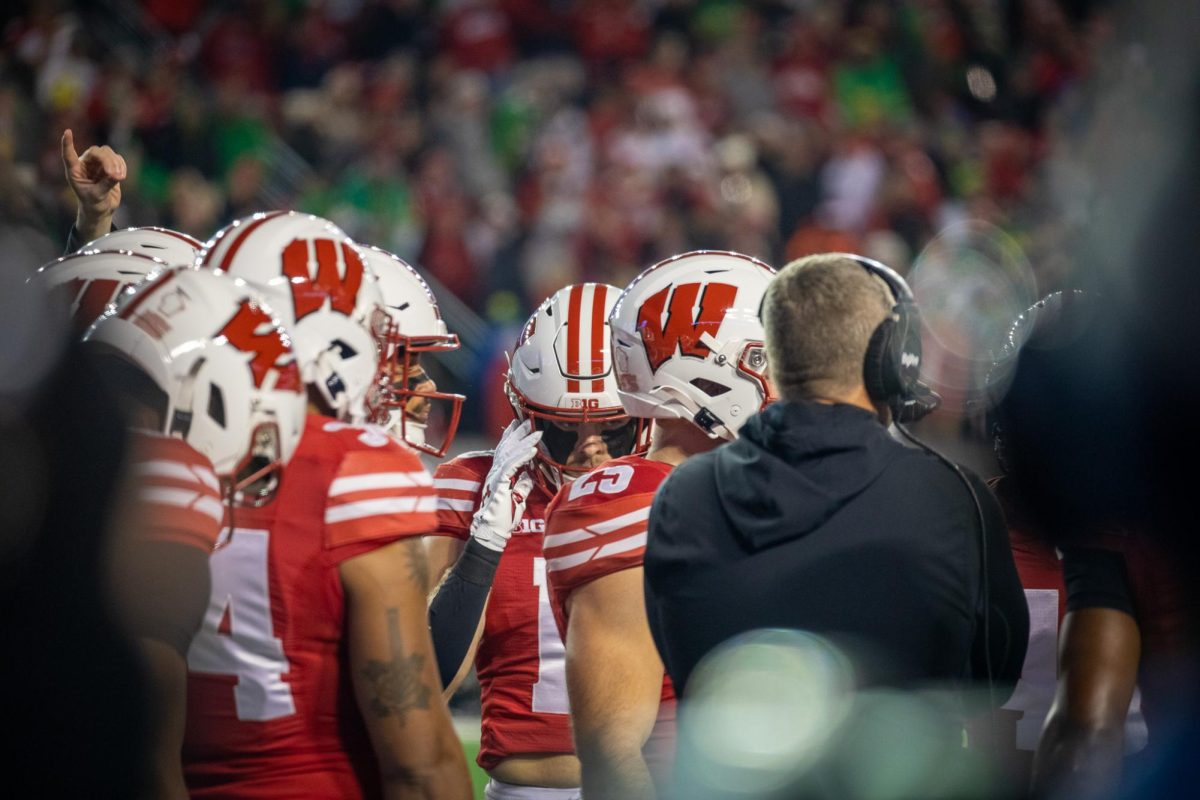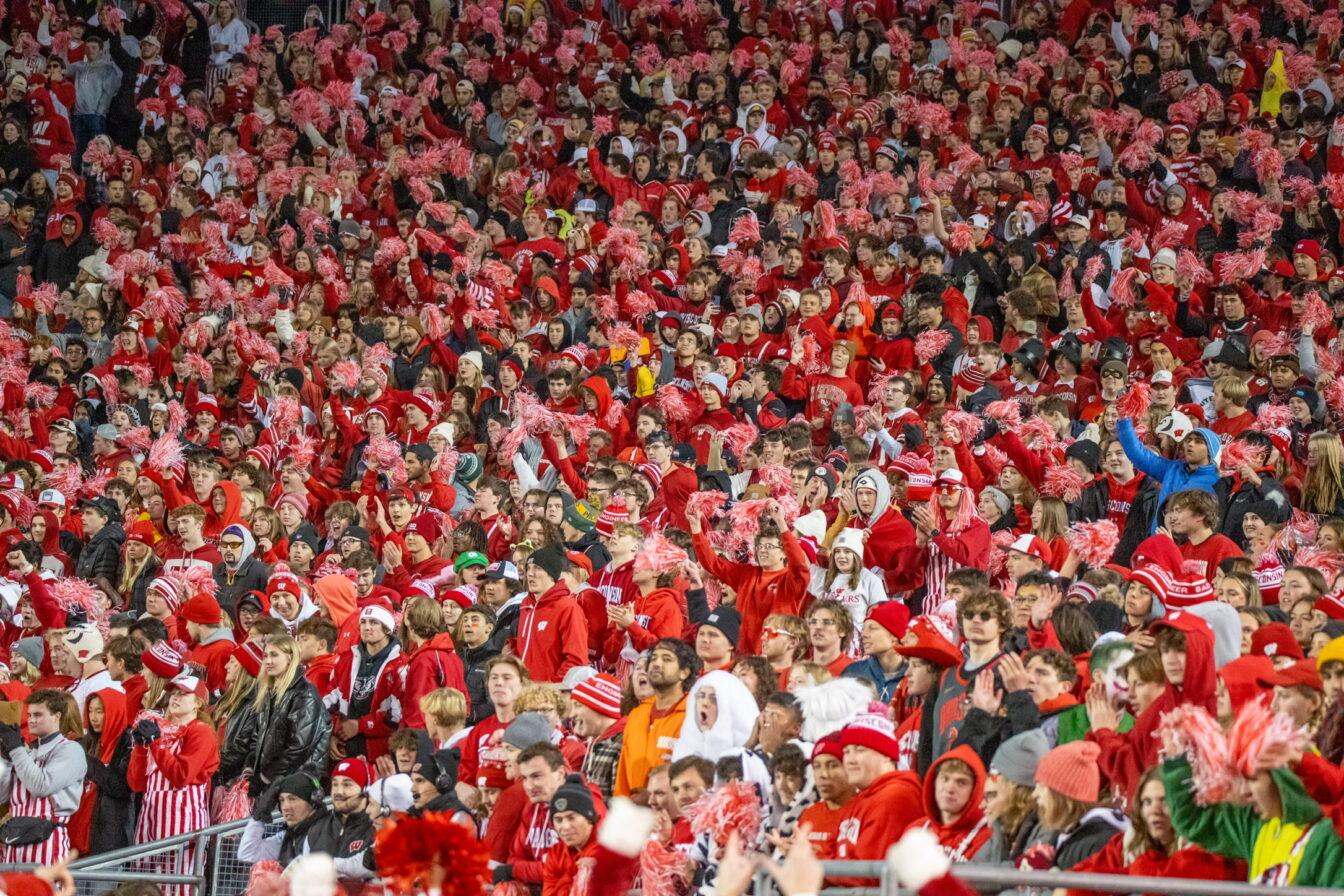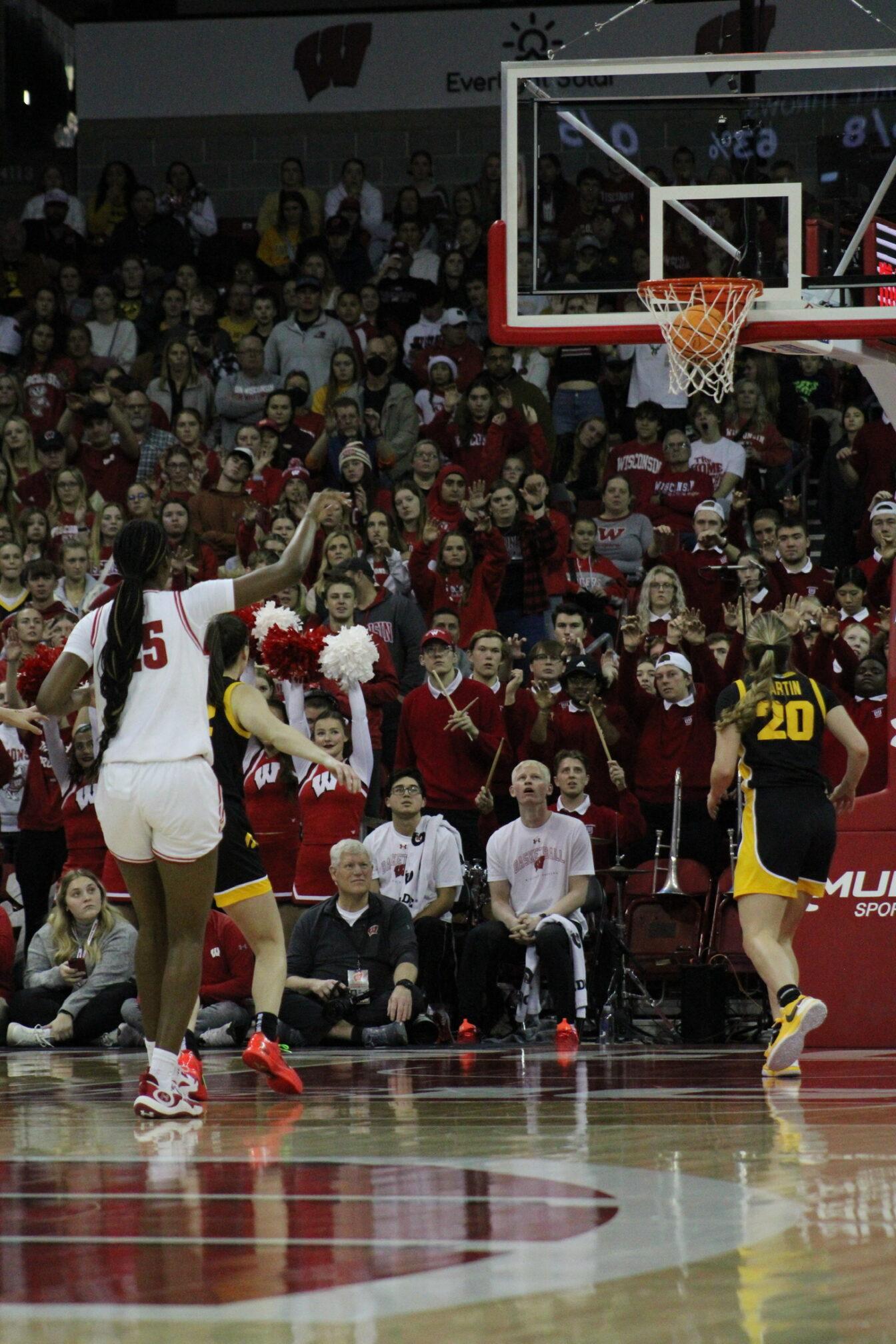
In a deeper-than-usual Big Ten this season, the Wisconsin Badgers have been challenged early and often through the first seven games of their conference slate.
Though they were riding a three-game winning streak entering Sunday’s game at Illinois, the Badgers initially dropped three of their first four games in Big Ten play. After beating newcomer Nebraska on the road Dec. 27, Wisconsin lost its next three, at home to Iowa, at home to Michigan State and at Michigan.
More than anything else, the two consecutive losses at the Kohl Center were most stunning for the Badgers, a team that takes great pride in its home record. Back on Dec. 3, Marquette snapped Wisconsin’s 23-game home winning streak. For the season, the Badgers are 2-2 at home in Big Ten play. The mark, though a result of several different contests, has one fairly simple common denominator – shooting.
After wins, UW players and coaches celebrate the team’s depth and the balanced scoring it fosters.
“Since our scoring is so balanced, other teams have to cover everybody on our team every night,” guard/forward Ryan Evans said after Wisconsin’s 77-57 win over Northwestern on Jan. 18. “That’s big because you don’t know who is going to be hot, and you can’t just focus on one person.”
Following losses, which have seen the Badgers shoot as poorly as 16 for 51 from the field (31.4 percent, against Michigan Jan. 8), the explanations are harder to come by. For a team that, as usual, blazed through its non-conference schedule with frequent lights-out shooting efforts, Wisconsin’s hot-and-cold manifested itself at the worst time, right near the beginning of Big Ten play.
In that three-game losing streak, the Badgers posted three of their four worst shooting percentages of the conference season, never hitting above 34.8 percent. In the second game against Nebraska Jan. 15, which Wisconsin ultimately won 50-45, the Badgers were just 15 for 48 from the field (31.3 percent), though they reached the foul line 48 times and hit 18 (75 percent).
“The game doesn’t change for us, what we’re trying to do,” head coach Bo Ryan said. “It’s just at times, everybody goes through this with shooting. I’ve seen it more in the past couple years than probably 10 years combined – just kind of the swings in shooting percentages, in guys’ confidence, in guys being comfortable in what they’re doing.”
As usual, Wisconsin’s saving grace has been its defense. The Badgers lead the nation in both points allowed per game (49.0) and opposing field goal percentage (35.4 percent). But with uncharacteristic struggles – a relative term, as the Badgers are still fourth in the Big Ten at 71.7 percent from the free throw line but subpar for a Ryan-coached team – from the charity stripe, the inconsistent shooting performances have the ability to derail Wisconsin’s season against a tough Big Ten slate.
“We knew that going into the year that it was going to be a night-in, night-out grind, even more so than it normally is in the league just because there are so many good teams,” point guard Jordan Taylor said.
Aside from the weak shooting in the win over Nebraska, Wisconsin’s three-game winning streak has seen a pair of its finest shooting efforts of the season. On the road at Purdue – Mackey Arena is consistently one of the nation’s toughest venues, especially for a team having lost three in a row – the Badgers sunk 47.5 percent of their shots and 45 percent from three-point range. Against Northwestern Wednesday, Wisconsin was 50 percent from the field (27-of-54) and 52.2 percent from three-point (12-of-23).
“I think a lot of guys spent a lot of time in the gym, myself included,” forward Mike Bruesewitz said of UW’s improved shooting effort. “I think everybody has done that. There have been a lot of extra hours after practice, before practice. We do that anyways, but we’ve been in kind of a slump.
“Also we’re moving quite a bit better without the basketball. We’re making good cuts and getting a little bit more open shots, and that’s why they are falling.”
For Ryan, tasked with quelling the worries prompted by his team’s up-and-down shooting while simultaneously finding ways to improve it, the answers are relatively straightforward.
“You don’t whine, you don’t complain, you don’t feel sorry for yourself – you just play and practice and practice and practice some more,” Ryan said. “It’s always all smiles when the ball’s going down.”


